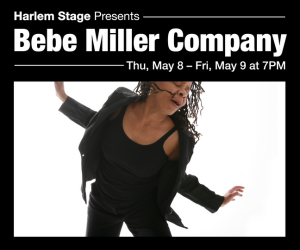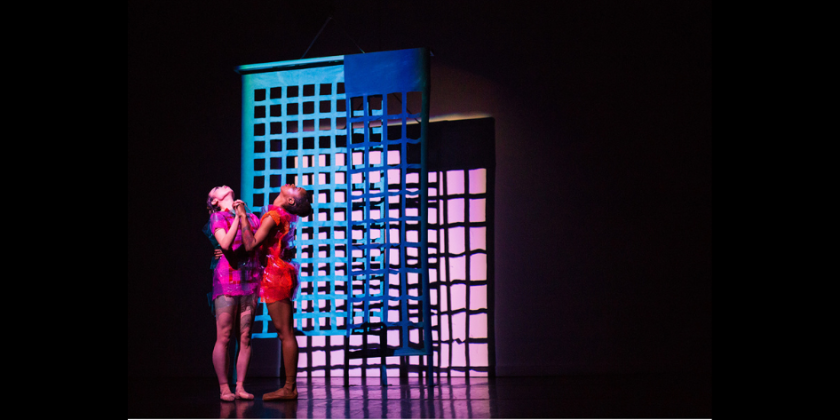The Guggenheim’s Works + Process Features Rogers + Hammerstein’s "Oklahoma!" Choreographed by John Heginbotham

Works + Process
Peter B. Lewis Theater, Solomon R. Guggenheim Museum
Rogers + Hammerstein’s Oklahoma! as reimagined by Daniel Fish
Panel: Susan Feldman (moderator), Daniel Fish (director), John Heginbotham (choreographer), Daniel Kluger (arranger/ orchestrator)
Cast: Damon Daunno, Gabrielle Hamilton, Rebecca Naomi Jones, Mallory Portnoy, Mary Test, Patrick Vaill
Musicians: Joseph Brent, Leah Coloff, Hilary Hawke, Nathan Koci, Eleonore Oppenheim, Brett Parnell, Andie Springer
The Guggenheim’s Works + Process champions collaborative works by shedding light on the many perspectives that ultimately shape a piece of art. The latest in the series unpacks director Daniel Fish’s reimagining of the 1943 musical Oklahoma!, which is currently playing at St. Ann’s Warehouse in a run that’s been sold out since September.
Works + Process showcases excerpts that are flavored by insight from a panel including Fish, arranger/ orchestrator Daniel Kluger, choreographer John Heginbotham, and Susan Feldman, artistic director of St. Ann’s Warehouse. This group contributes new robustness to the 75-year-old work to prove how great art maintains relevance by lending itself to fresh viewpoints and interpretations.

Many people are familiar with the 1955 movie Oklahoma! that uses Rodgers and Hammerstein’s original script and music. While Fish’s Oklahoma! maintains the original script, he takes creative license with the instrumentation of the music. The traditional orchestration has been reconfigured for string band, which includes banjo, cello, violin, accordion, pedal steel guitar, mandolin, guitar, and drums.
Another component of the reimagined work is the orientation, which stages the space as a barn. Fish says a piece of dance or theater is a collectively shared experience that simultaneously belongs to everyone involved since audience and actors respond to one another. Because the story is told more through language than movement, Fish and Heginbotham worked together to create staging direction that ensured the language was perceived well.

Anthony Cason, Will Mann, and Michael Nathanson; Photo: Teddy Wolff
When new perspectives are introduced, a work can evolve to have more depth than the creator imagined. This is true in Heginbotham’s reimagining of the Dream Ballet, which is significantly different from the original production. It traditionally closes out the first act, but here, it opens the second and is performed as a solo.
The Dream Ballet takes place when Laurey, conflicted in her feelings about two men, takes a sleeping potion in the hopes that she will wake up with a revelation. While Hammerstein initially imagined the Dream Ballet as a divertissement or a circus-like interlude, original choreographer Agnes de Mille felt it was meant to be more of a sexual fantasy that conveyed deeper elements of Laurey’s character. Heginbotham’s reinterpretation builds off of this idea, aiming to throw the audience off balance.
Damon Daunno and the band; Photo: Paula Court.
Post-show, I asked Heginbotham about his interpretation of the Dream Ballet:
Theo Boguszewski for The Dance Enthusiast: Why did you choose to do the Dream Ballet as a solo?
John Heginbotham: The Dream Ballet was created very collaboratively with the director, and at several points in its development, we explored the idea of multiple dancers performing the piece — even in the current version, there is a wonderful chorus of nine dancers, which rushes the stage during a couple of important moments. For me, centering on a single figure to carry us through the Dream Ballet is crucial because the dancer's aloneness makes her — and actually us — vulnerable. From there, it is possible to allow tension, strength, and power to enter into our experience. She is clearly our way in. The dancer is Gabrielle Hamilton, and she's excellent — she can do anything.
You speak about Agnes de Mille’s original vision for the Dream Ballet as revealing a young woman’s fantasies about her own sexuality. Were there specific gestures or moments in the solo that conveyed this?
Heginbotham: The Dream Ballet is a turning point in the show. We've reached a place in the plot where Laurey Williams, the female protagonist, is faced with a decision about which man she will select to take her to the box social. Although that may seem like an innocuous event, the stakes are actually very high — ultimately the actions, which take place at the box social, lead to a life-and-death situation. That tension trickles continuously forward in Act 1, and the Dream Ballet, if it is successful, unleashes the dammed-up river, which carries us to the end of the show.
Sexual tension, sexual fantasies addressed indirectly throughout Act 1 provide important content for the Dream Ballet. In terms of the gestural language of the dance, there is a recurring motif of a singlehanded touch: a scrape, a caress, a trace, a seize. This motif is sometimes the main event and sometimes hidden in other action happening around it. Some of the movements are ambiguous — the horseback riding motif, taken directly from Agnes de Mille's choreography — is both sexual and practical. Also, in Ms. de Mille's version only men perform the horseback riding gesture; in this version, only women perform it. There is a great deal of stillness and looking during the ballet — the dancer is looking at us, and we are watching her in her stillness. Whether or not that is a sexual gesture, it is an intimate and vulnerable one.

Can you speak about your relationship with the music for the Dream Ballet? Any insight into the choice to switch from recorded music to live music over the course of the piece?
Heginbotham: The music in the Dream Ballet is made up of songs we've heard throughout Act 1, but now the instrumentation is different — electric guitar, for instance as opposed to acoustic — we've never heard it like this. Familiar and unfamiliar, which supports the tension of the Dream. I love this, because, like in dreams, the material is sometimes recognizable — images, sequences from our daily lives — but often those images become distorted, or their new context makes them strange. The question of live vs. recorded music for a portion of the Dream Ballet was answered during a rehearsal experiment; we excused the band and felt how powerful it was to see Gabrielle take the stage absolutely alone. It was the right thing for her to be the sole figure on stage — and then also the right thing later when the musicians, as well as the cast of actors, assembled for the climax.
The Dance Enthusiast Covers The Stories Behind Dance Performance, Speaking with Artists and Creating Conversation
For more Behind-the-Scenes Stories of the NYC Dance World Click on our Day In The Life of Dance Section.















